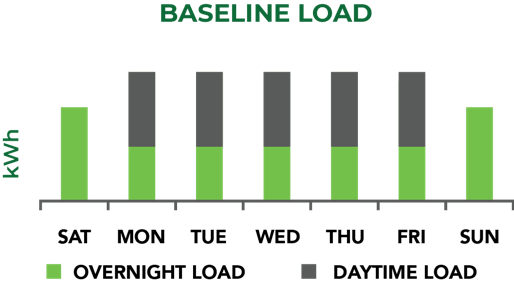Implementing plug load control works best with an experienced partner. Even though plug load energy savings is considered low hanging fruit, it represents a small piece of many performance contracts. Therefore, ESCOs must be confident about their partners’ ability to quickly and efficiently deliver maximum energy savings before adding plug load control to a project.
At Bert, we know what we’re doing. We created a structured installation process, designed for performance contracts, that has been refined after installing 40,000 Berts in 1,000 buildings. We complete most projects within 6 – 8 weeks, keeping partners and users updated every step along the way. This post highlights our approach to implementing plug load control.
Turnkey Plug Load Implementations Ensure Success
It’s a fact. ESCOs don’t have the time or energy to manage plug load projects. Instead they rely on partners with the resources and expertise to manage the entire implementation for them. ESCOs require turnkey solutions from vendors with the capability to handle everything, including audits, installations and integration services.
At Bert, we see ourselves as more than just a technology company. We take complete responsibility for the entire project, from preliminary savings through measurement and verification. In some projects, Bert performs the IGA audit and the hardware installation. Other times, we train and manage partners selected by the ESCO. Either way, we do not turn the system over until every Bert is named, grouped and scheduled and the post-installation savings report is created.
Details Matter When Implementing Plug Load
Projects require attention to details. Besides documenting the location and type of each load, it’s also necessary to identify locations that lack Wi-Fi coverage or have other issues preventing the installation of plug load control hardware. Ideally, this data is shared with partners and end users throughout the project. For instance, installers need the audit data before going on-site so they know where to go. Performance contractors and end users want “as-built” documents reflecting up-to-the minute progress.
Cloud-based tools make it possible to keep track of the specifics. In addition, information such as photos of hardwired inline devices can be shared real-time. Bert’s set of robust iOS and Android audit and installation tools facilitates data sharing. Besides providing instant access to the data, the technology allows Bert to remotely monitor audits and installations, providing immediate assistance.
Provide easy-to-understand energy savings estimates
Everyone agrees the goal is delivering actual energy savings that are equal to the IGA savings estimate. In a perfect world, IGA estimates would be identical to the post-installation savings reports. In reality, most projects have minor equipment changes. Therefore, ESCOs and user must be able to easily compare the IGA and the final “as-built”.
Bert makes it easy by presenting all savings data in the same format. Whether it’s a Preliminary Savings estimate, an IGA estimate, or a post-installation M&V report, the data looks the same.
To ensure the actual savings are equal to our IGA estimate, we deliberately generate conservative IGA estimates and continue to identify additional energy savings opportunities throughout the life of the project. We are proud of our ability to consistently achieve actual energy savings that exceeds our IGA estimate in many projects.
Decide upfront if projects warrant an IGA
It’s true that implementing plug load control improves most project economics, but not all projects make sense – particularly in locations with extremely low kWh rates or in buildings where devices need to be on all day, every day. ESCOs often prefer to do an upfront analysis before deciding whether or not to proceed with an IGA.
Bert’s Preliminary Savings Sheet provides ESCOs with an educated guess about potential energy savings without going on-site. We enter the building types, building sizes and building kWh rates into a proprietary modelling tool that calculates the expected number and types of plug and inline devices by building. Based on the occupancy hours for each building, the tool estimates energy savings using standby load data from similar devices in previous Bert projects.
Assuming the numbers make sense and the project moves forward, Bert follows up with an on-site IGA. Estimated counts are replaced with actual counts and savings are recalculated.
If you want additional information about implementing plug load control, please feel free to reference our FAQ guide or reach out to a Bert representative.


